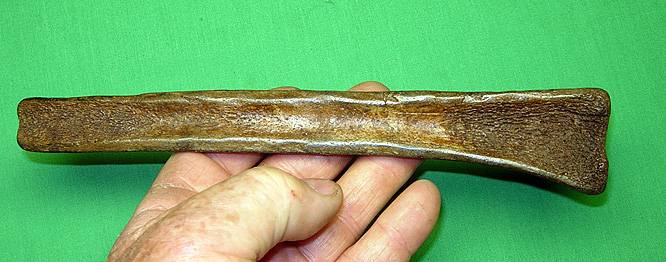



Many tools required the use of larger bones for heavier tools. The beamer was often made from the cannon bone of a deer (the long foreleg bone above the hoof). The beamer was used to scrape hides that were laid over a smaller pole or similar support. The tool was used in a fashion similar to a modern steel draw-knife by holding one end in each hand and then scraping the hide in a pushing or pulling motion. For this reason, most beamers show heavy wear in the central section of the bone or are found broken in half.
The beamer was made by engraving or rubbing an elliptical groove or slot, removing about one third of the dorsal side of the bone shaft, thus exposing the interior edges of the bone. Those edges were then sharply beveled on each side of the opening. These sharp edges provided the scraping portion of the beamer. As wear and resharpening these edges continued, the central portion became thinner and weaker until it broke. Beamers have a concave structure, a beveled scraping edge, and evidence of wear and polish on the ends of the top of the tool and on the working surface. The example at the lower left is a Late Archaic example of a deer mandible that appears to have been altered in the same way as the cannon bone for the purpose of scraping hides. The example was recovered at the Bob’s Mound site on the Ogeechee River in Jenkins County, Georgia.